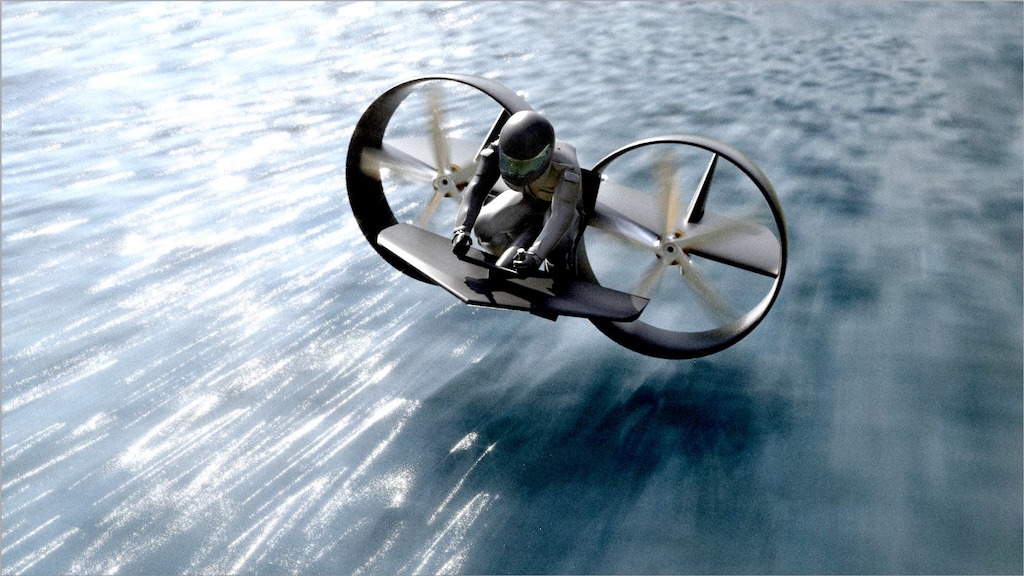
Successful first test of 'flying motorbike'
The Silverwing, a kind of flying motorbike which a team of students from Delft University of Technology hopes will win a major Boeing design competition later this year, flew its first metres on Wednesday in a successful test flight.
The flight was carried out in a warehouse in Delft-Zuid using a scale model (1:2) with a dummy attached to it. Later this year, the makers hope they will be able to fly a full-size version of the Silverwing.
As a precaution, the scaled down model was secured to the warehouse ceiling during the test flight to avoid any hard landing. It was also powered by a cable connected to the mains, rather than using its battery. The entire model, including the dummy, weighed 7 kilos, but the full-size version will weigh in at around 250 kilos including rider.
BOEING
The Silverwing Team, which consists of 34 students from various departments of Delft University of Technology, has to send its progress report to Boeing in a week’s time. The American aircraft manufacturer launched the GoFly competition 18 months ago, challenging students and companies to design a solo flying machine for the future.
The device must be able to stay in the air for at least 20 minutes, rise vertically, and reach 120 km/h. ‘But we’re Delft students, so we want to do better than everybody else,’ says Ruben Forkink, one of the team leaders. ‘That’s why we decided to build an electric device that can fly completely autonomously.’ The Silverwing is fitted with lots of sensors to help it fulfil this task, including a radar, LIDAR (which is also used in autonomous cars), GPS and speedometer.
ONE MILLION DOLLARS
At the first round of judging in the Boeing competition last summer, the Delft team was selected from 200 competing teams as one of the ten winners (for more, see Flying motorbike takes off vertically), and awarded USD 20,000. In late February, the winner of the second round will be chosen from the same 200 participants, with this time a sum of USD 50,000 at stake. The grand final will be held in October this year in the form of a Fly-Off in the United States, when the winner will take home one million dollars.

LOTS OF CHALLENGES
The makers hope that the Silverwing will be on the market in five to ten years’ time. ‘For the time being, we still have to overcome a lot of technical and regulatory challenges,’ says team leader James Murdza. ‘However, others in the aviation industry will also benefit from the innovations we’re developing here.’
Eventually, everyone should be able to fly the machine. The aircraft is completely autonomous – the rider only needs to enter the destination – so no pilot licence is needed. In the unlikely event that something goes wrong in the air, the aircraft will automatically and safely land in glide mode, Forkink emphasizes.






